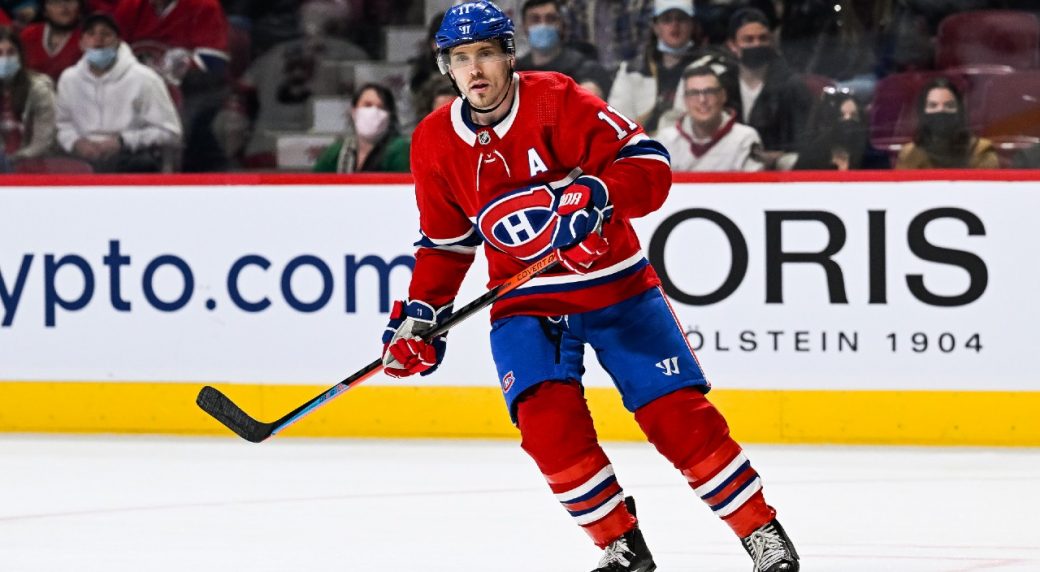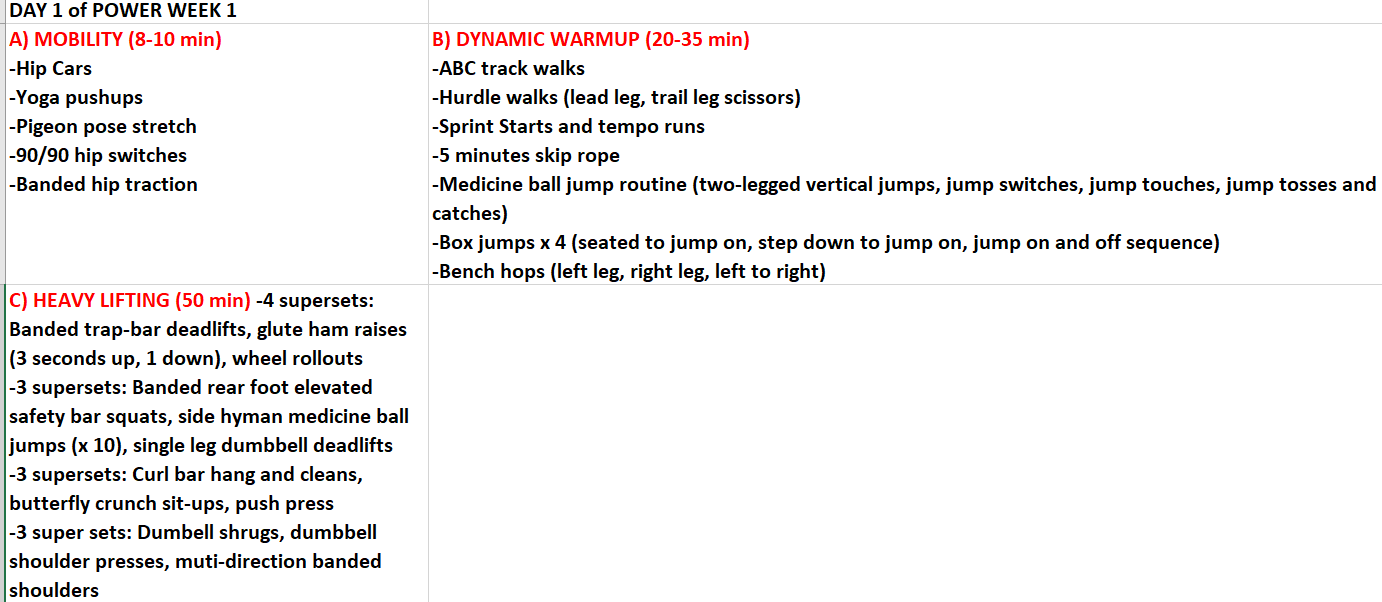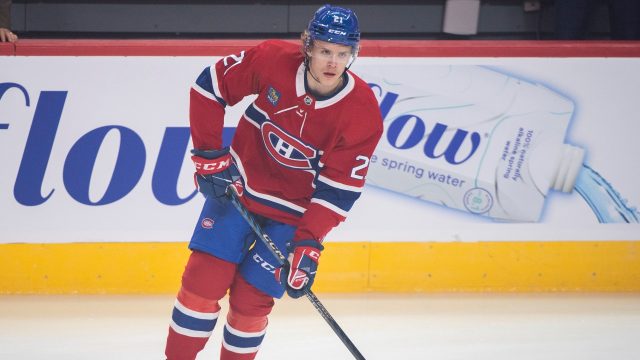MONTREAL — Brendan Gallagher is downplaying it, like it’s totally normal for a man his size to be deadlifting over 550 pounds. Never mind that it’s 70 pounds more than what goliath Milan Lucic hoists.
“I’m lower to the ground than Looch, so it’s easier because I don’t have to pull the weight up as high,” Gallagher says. He’s laughing this feat of strength off and suggesting that any five-foot-eight, 184-pound man in reasonable shape would outperform a six-foot-three, 230-pound man in equally good shape on this specific exercise.
When we tell our personal trainer about Gallagher lifting this amount of weight, and about his theory, his eyes bulge.
“That would be a ton for a man Lucic’s size. It would be a lot for a professional deadlifter,” says Anthony Manelli of U.N.I. Training in Pointe-Saint-Charles, Montreal. “I know he’s a professional athlete, but that’s just ridiculous.”
Lucic, who’s been working out in the summers with Gallagher for over a decade, agrees.
“I’ll max out on a deadlift at four or five plates, but Gally will just keep going up in weight,” the Flames forward says. “A lot of people just don’t realize how strong he is. It’s pretty amazing. And yeah, it’s crazy watching him lift that much.”
It’s downright astonishing when you consider what Gallagher has been through physically since the 2020 bubble Stanley Cup Playoffs and what this specific movement requires — starting with the hips hinged and ending with them thrusted as that weight flies off the ground and practically bends the bar.
It was early during that unexpected August run for his Montreal Canadiens in Toronto that he tore the labrum in his left hip. Without surgical intervention, this injury (and several others that piled up over the last two years because of it) made it so that Gallagher couldn’t walk up the three steps to the press conference podium at the Bell Centre last season without limping and wincing in pain.
It was during those meet-the-media sessions, held as Gallagher was slumping through the least productive of his 10 seasons in the NHL, that he kept repeating, “I just need a full summer to build my body back up.”
In order to do it, the 30-year-old would have to heal first.
As Gallagher explained to us, everything he dealt with last season emanated from the tear in his hip, including a bulging disc in his back that left him incapable of standing up straight for a few days but only kept him out of one game last October, a strain to the psoas muscle (which runs up from the bottom to the mid-section of the spine) and instabilities to virtually all the muscles attached to his pelvis.
It was a long and steady decline, starting with the run in the bubble, which left him hobbled, mending a broken jaw and limited to only a fraction of the time he normally takes to prepare for a season. And a run to within three wins of dethroning the Tampa Bay Lightning for the Stanley Cup in the summer of 2021 gave him even less time to recover and build himself up for 2021-22.
“I need that time to build up the big muscles,” he says. “My back is huge. Glutes huge. Hamstrings and quads huge. It takes time to make them huge, but it’s key to do it because all the big muscles being built makes it so the little muscles and things don’t go.”
Gallagher believes the hip injury suffered in the bubble was a product of this process being interrupted.
He had played most of an entire season before the NHL hit pause in March of 2020, and he was incapable of training properly before returning for the playoffs due to COVID-19 restrictions making training facilities inaccessible.
“It was it was just a bizarre scenario, and everybody dealt with it,” he says. “We maybe had a week of skating. It was a week, but it wasn’t really a training camp style of skate. Guys hadn’t really been skating at home, rinks and gyms were closed, and you were doing what you could on your own for a couple of months.
“We came, had one or two hard skates and then a tune-up game against the Maple Leafs. Then we jumped right into the playoffs, and it was tough. I mean, a lot of guys were having stuff going on.
“It was all manageable, until the hip went on me.”
With his skating stride reduced in length to nearly 60 per cent of its capacity, Gallagher kept on playing until he was dealt the jaw-breaking blow from Philadelphia Flyers defenceman Matt Niskanen. Then, after the Canadiens were dispatched from the bubble on Aug. 21, Gallagher travelled home to B.C., where rest would be his main program before returning to Montreal for a shortened 2021 training camp in January.
“You don’t even really call it summer training,” he says of that off-season. “It was just maintenance and doing whatever you could to get your body ready to skate. Ice was unavailable, gyms mostly unavailable. It was the type of maintenance you do during the season to keep your body going and keep what you have instead of building. I was so depleted from what I just went through, but I still felt like I had enough in me and felt I was okay for that season.”
Signing a six-year, $39-million contract extension in October of 2020 provided a boost, but there were no physical benefits to that.
It was going to be an up-and-down sprint through a compacted schedule.
Gallagher handled it reasonably well, producing 14 goals and 23 points in 35 games.
Then he broke his thumb and missed the final 21 games of the season, leaving him at less than 100 per cent for Montreal’s run to the Cup Final.
The Canadiens lost the series in five games and returned home July 7, and Gallagher and his teammates had just two months to recover and prepare for the 2021-22 season.
It proved disastrous for all of them as they tumbled to a last-placed finish in the NHL, and it was that for Gallagher from the start. He was on the trainer’s table immediately in camp — with his hip acting up, and his back and all the other muscles around his pelvis going as they compensated for the instability and weakness in his hip — and it would become like a second bed for him throughout the season.
The result was a seven-goal, 24-point output over just 56 games, which left Canadiens observers feeling like Gallagher would never be the same again.
Defiantly, Gallagher maintained that being able to do the 80 workouts he normally packs into an off-season would enable him to return to form. But before the Edmonton native could get into them, he’d need at least a month off skates and a lot of physiotherapy.
Gallagher’s father, Ian — a longtime strength and conditioning coach who also trains Lucic, Colorado Avalanche defenceman Bowen Byram, Buffalo Sabres forward Alex Tuch and Penguins defenceman Ty Smith, among others — had a strong sense of how damaged his son was when he returned home. When asked about the process that went into rebuilding Gallagher’s body over a full summer, Ian laughs and says, “He wasn’t doing too good.”
But Ian was confident that things would improve. And his belief that Gallagher can return to being the player he’s been for the majority of his career — a relentless one who dominates in the hardest areas of the ice to produce meaningful depth scoring — was only bolstered in the lead up to his son’s return to Montreal this fall.
Against commonly held opinion, Ian believes the best is yet to come for his son.
“Physiologically, if you look at the teams that have won the Stanley Cup, the bulk of their players are between ages 28 and 32,” he says. “The reason why is that’s where everything they’ve put into it physically comes together for the best version of themselves. The body is the quickest at 20 years of age but it’s actually at its strongest at 40, so those athletes between 28 and 32 are right in between. People can say he’ll never be the same, but I know that’s not true.”
Natural bias aside, having a hand in Gallagher’s rehabilitation and a front-row seat to his training gives Ian a much better sense than the general public for what’s possible this season.
Here is how that off-season regimen broke down.
Phase 1 was active recovery and physio. Gallagher needed to get to a place with his hip where he wasn’t left sleeping on the couch in his basement rather than walking up the stairs to bed after games, and that would require a lot of work.
As would getting the groins, hip flexors and back muscles to open back up.
“That first month is all about getting your mobility back,” Gallagher says. “It’s a slow process with a lot of activation exercises to build that up so you can move to the other phases of the summer routine.”
Gallagher explains that staying off the ice was the biggest factor in making sure the first month went smoothly.
“It is amazing that, when you don’t skate and there’s no wear and tear on the body, recovery time is very quick,” he says. “You get physio, and then you start a few weeks later with 45 minutes of running on a treadmill or 45 minutes on a bike.”
What follows is what Ian refers to as the endurance and strength phase — a month of cardiovascular activity and high-repetition, low-weight exercise with minimum rest in between sets.
“So, for example, whereas Brendan would be deadlifting over 550 pounds at lower repetition by end of summer, he’s starting at 185 pounds and several reps and moving to 235 pounds by the end of this phase,” Ian explains. “We’ll split the body up and do bilateral motions early in the week and unilateral motions later in the week and we do five workouts per week all summer.”
“A bilateral thing is like both legs working together at the same time — squats, deadlifts and so on,” Ian says. “Second half of the week will be single-leg and single-arm stuff — Bulgarian squats, lunges, step-ups, single-arm shoulder presses and things of that nature. We’ll split up the body parts each day because the science of it is that it takes 48 hours for the muscles to recover. So, we’ll work one muscle group Mondays and Thursdays and work another Tuesdays and Fridays and do something more like active recovery on Wednesdays.”
To build endurance, Gallagher does long-duration exercises like a 30-minute ride on an RPM bike, an eight-mile run on a treadmill, 3,000 meters on a rowing machine and three-to-five-mile runs outside.
Then it’s on to what Ian refers to as “the power phase,” which involves the bulk of the heavy lifting of the off-season.
Here’s a sample of what Gallagher does on a given day of this three-week segment:
These sessions end with a cool down, some nutrition, and some treatment and massage.
Then Gallagher moves on to the speed and agility phase of his summer, doing things like cone work, ladder work, agility-pattern short sprints and downhill sprints on an eight-to-five-degree decline setting.
And the final phase of Gallagher’s summer training is a power-maintenance program, where he’ll run through 10 different stations per day lifting considerable weight to dial in power and explosiveness and create what Ian says is “the four-directional speed all coaches are looking for.”
While Gallagher normally gets back on the ice for practice and skill sessions in June, he waited until July this time around, starting with two skates per week and ramping up to four or five through August.
To say it all went well would be putting it mildly.
“He looked like he was back to his regular-season self by the end of summer, the way I was used to seeing him leave for Montreal,” says Lucic. “His body is in a good place, his head is in a good place, and that’s a really good feeling for any player to have going into a season.”
Upon his arrival at Canadiens training camp, we asked Gallagher if any of the injuries that plagued him last season we’re lingering, and he said none were.
Confirmation has since come on the ice, with Gallagher appearing like he’s moving better and faster than he has in a long time.
“I mean, this is the best I’ve felt in a couple of years,” he says. “I can tell you how I felt when I showed up last year and you know, it’s night and day for me. I can tell you it’s held up well through camp, and I’ve had to spend a lot less time on the (trainer’s) table. Just taking care of my body right now requires a lot less. I remember last year in camp, my back was flaring up and I think I missed a couple days. It was just right from the get-go and I was playing catch up all year.
“I feel great right now. You know there’s going to be days that are hard, but I’m confident with where my body’s been built to that if you have those tough days, there’s enough there where you’re not going to be having one thing leading into another and you’ll be able to isolate what it is and take care of it and get back to play.”
On nights when the legs aren’t quite there, Gallagher will resort to playing what he refers to as his “B-game.”
“That comes from a night my dad and I were watching baseball and (former Toronto Blue Jays pitcher Mark) Buehrle said in interview, ‘Over a full season, 33 per cent of the time you’re going to feel unbelievable, 33 per cent of the time you’ll feel average, 33 per cent of the time you’ll feel terrible, and anyone can play great when you feel unbelievable, good players can play okay when they feel just alright and the great players will find a way to pitch a good game when they feel terrible,’ and that really resonated with me.
“My B-game means I have certain non-negotiables that I can bring to be effective. For me, there’s things that you control, and your brain is something that you always have control over. You can think your way through a game, and a lot of that is using your linemates and playing smart and simple. Another thing is, if I don’t have my legs, getting in someone’s face helps get your testosterone going and gets you involved in the game early. If you see me doing that early in the game, it’s usually because I haven’t felt great and I’m just trying to get involved. There are other things I know I have to do to be a successful player and that’s being around the net, playing in the o-zone and playing little give-and-go games with my linemates and just sticking to my identity as a player.
“It’s working smarter and not expending unnecessary energy trying to wrestle a 245-pound man in post-whistle scrums.”
Gallagher also knows that when he’s not feeling up to it, he’s going to have to pull back a bit from practice at times — an option that was given to him by Canadiens coaches last season, but not one he exercised at any point.
Gallagher said he didn’t want to abandon his teammates after devastating losses and felt a responsibility to be a part of working in unison to find solutions in practice.
As Ian explains, “The most important thing for coaches is availability, and Brendan knows that. His pain threshold is a function of that. It’s more of a mindset than it is anything physical.”
But Gallagher acknowledged that mindset might have cost him on the performance side at times in games.
“I think I have to approach general maintenance in a different way,” he says. “I understand what I went through last year, and I don’t want to get to a point where I’m ever there again. And even on days when you’re feeling good, it’s easy to not do anything but I have an activation routine I need to stick to.
“I have a set thing that I do every morning in the gym — I get into a pigeon pose, I have a band around my hip, I have a ball that I put against the wall where I open up my hip and turn into it and things like that. Then I have a dynamic warmup where I roll out the different muscles. I have to do this stuff every morning and before every game, and it takes 15 minutes.
“My first year in the league, I’d show up and play soccer for an hour and then go play, and I felt great.”
The process, with age, has changed significantly.
But for the first time in a long time, the feeling for Gallagher is just the same.
That has everything to do with the work he put in over the summer, and the confidence he’s taking from it.
“When I had no issues, the most I had ever deadlifted was 610 pounds for two reps,” Gallagher says. “They’ve cut me off from that, but to get back to 550 made me feel reassured. Little signs like that show the process works and that I’m back to where I was.
“It was hard, it took a lot of time, and it was a lot of work by not just me but especially everyone around me — physios here and at home, my dad, and our trainers here who have been great at incorporating all the little things my dad built for my program at home.”
With the physical reset comes a mental reset, too, and Gallagher feels that’s something that needed to happen after admittedly not processing the frustration of last season the way he should have.
“I’ve always believed in the two-hour rule: You can dwell on something for two hours, but when you wake up the next morning and come to the rink, it shouldn’t affect you,” Gallagher says. “There were days where I’d still be thinking about the game before. I’d still be thinking about the week before, to be honest, and that’s something that I had always been pretty good at blocking out. I maybe didn’t realize it in the moment, but I did over the summer. I think when you’re away from the situation a little bit more, it’s easier to reflect.
“I’ve tried to correct that for this year, and hopefully you’re a better player and a better teammate for it. As for what people are saying about being a better player, I know there’s certain responsibilities on me to perform. I wasn’t able to do it last year, so it was disappointing, but I never lost a sliver of confidence in the type of player that I am or what I can do for a team. It’s just about getting back to being consistent.
“I’m pretty honest with myself and, at the end of the year, I like to be able to count on one hand how many bad games I had. For the most part of my career, I’ve been able to do that. Last year, that wasn’t the case, and there were legitimate reasons for that. But I’m just trying to get back to being a guy that’s going to contribute some way and to the team’s success every game — even if it doesn’t show on the scoresheet — and the work I did this summer should enable me to.”
There’s no downplaying what went into it.
“I’m very proud of him,” said Ian. “He’s very strong, and he’s prepared.”












